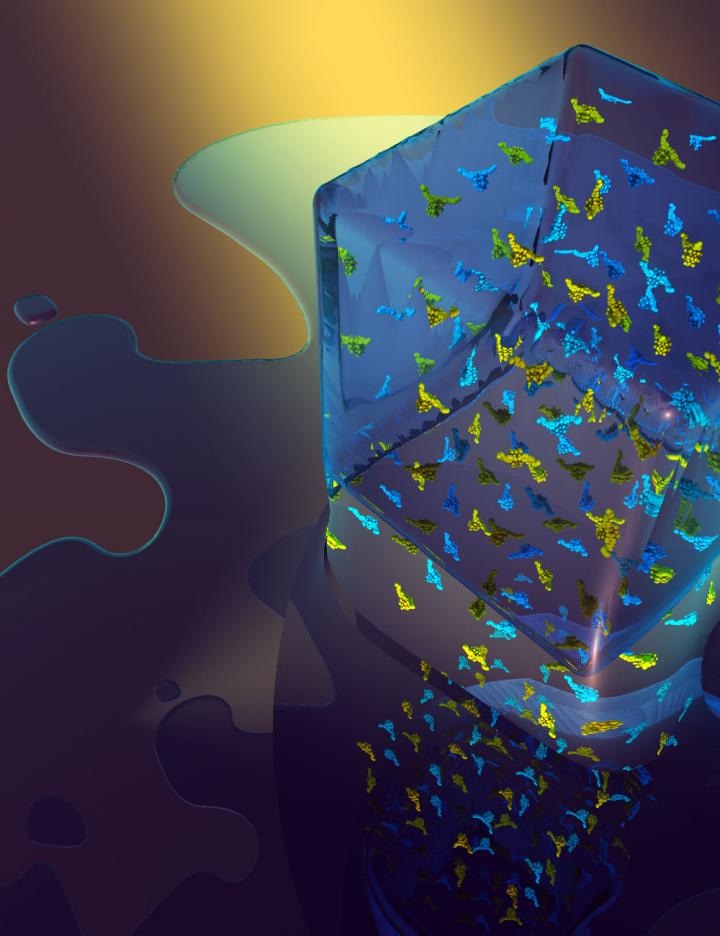Jun 21 2018
According to a new research from the University of Nottingham, 3D printing can be used to fabricate advanced materials containing molecules that change states in response to light and other environmental stimuli.
 Cube of advanced material featuring photochromic molecules. (Image credit: Victor Sans Sangorrin)
Cube of advanced material featuring photochromic molecules. (Image credit: Victor Sans Sangorrin)
This breakthrough finding presents new opportunities to considerably boost the functional capabilities of 3D-printed devices for the healthcare, electronics, and quantum computing industries.
The study, headed by Dr Graham Newton from the School of Chemistry and Dr Victor Sans Sangorrin from the Faculty of Engineering, has been reported in the academic journal, Advanced Materials.
This bottom-up approach to device fabrication will push the boundaries of additive manufacturing like never before. Using a unique integrated design approach, we have demonstrated functional synergy between photochromic molecules and polymers in a fully 3D-printed device. Our approach expands the toolbox of advanced materials available to engineers developing devices for real-world problems.
Dr. Victor Sans
The researchers developed a photoactive molecule to demonstrate their concept. When this molecule is irradiated with light, it changes from colorless to blue. However, this color change can be subsequently revered by exposing the molecule to atmospheric oxygen.
Next, the team combined the photoactive molecules with a custom-made polymer to 3D print composite materials. This resulted in a novel material that is capable of storing data reversibly.
We can now take any molecules that change properties upon exposure to light and print them into composites with almost any shape or size. In theory, it would be possible to reversibly encode something quite complex like a QR code or a barcode, and then wipe the material clean, almost like cleaning a whiteboard with an eraser. While our devices currently operate using colour changes, this approach could be used to develop materials for energy storage and electronics.
Dr. Graham Newton
The Leverhulme Trust, the University of Nottingham, and the German Academic Exchange service (DAAD) supported the research.